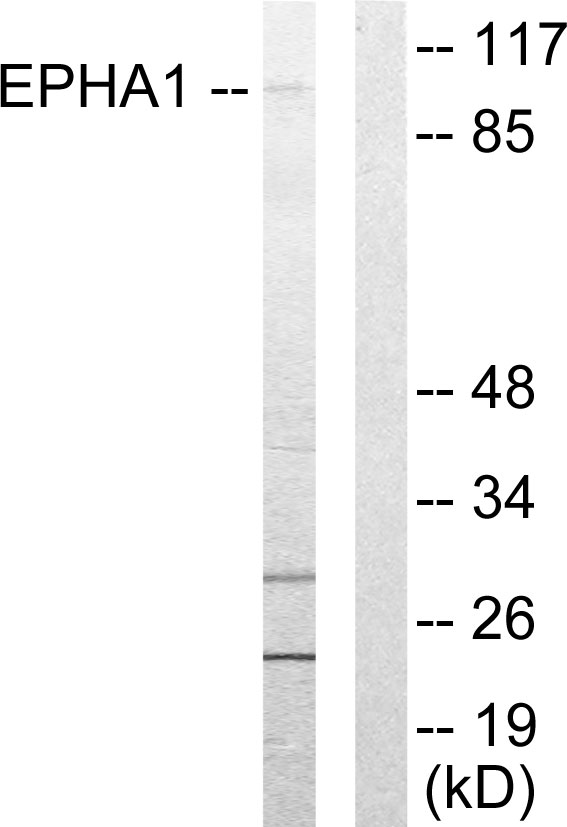EphA1 antibody
GTX27036
ApplicationsWestern Blot, ELISA
Product group Antibodies
TargetEPHA1
Overview
- SupplierGeneTex
- Product NameEphA1 antibody
- Delivery Days Customer9
- Application Supplier NoteWB: 0.1-0.2 microg/ml. ELISA: 0.5-1.0 microg/ml. *Optimal dilutions/concentrations should be determined by the researcher.Not tested in other applications.
- ApplicationsWestern Blot, ELISA
- CertificationResearch Use Only
- ClonalityPolyclonal
- ConjugateUnconjugated
- Gene ID2041
- Target nameEPHA1
- Target descriptionEPH receptor A1
- Target synonymsEPH, EPHT, EPHT1, ephrin type-A receptor 1, eph tyrosine kinase 1, erythropoietin-producing hepatoma amplified sequence, erythropoietin-producing hepatoma receptor, hEpha1, oncogene EPH, tyrosine-protein kinase receptor EPH
- HostGoat
- IsotypeIgG
- Protein IDP21709
- Protein NameEphrin type-A receptor 1
- Scientific DescriptionThe Eph family of receptors comprises the largest known family of receptor tyrosine kinases. Ligands of Eph family receptors are structurally related membrane-bound proteins that can be subdivided into two major subclasses, ephrin-A and ephrin-B. Expression of Eph receptors is tissue specific and appears to be tied to developmental events. Ligands in the ephrin-A subclass, including the prototype family member ephrin-A1 (B61), are membrane associated through glycosylphosphatidyl-inositol linkages, whereas ephrin-B subclass consists of ligands with transmembrane domains. The general role of the Eph family is in mediating repulsive cell-cell interaction.
- Storage Instruction-20°C or -80°C,2°C to 8°C
- UNSPSC12352203



![IHC-P analysis of human ovary carcinoma (left) and breast carcinoma (right) using GTX83346 EphA1 antibody [5D2].](https://www.genetex.com/upload/website/prouct_img/normal/GTX83346/GTX83346_20170912_IHC-P_w_23061322_532.webp)


